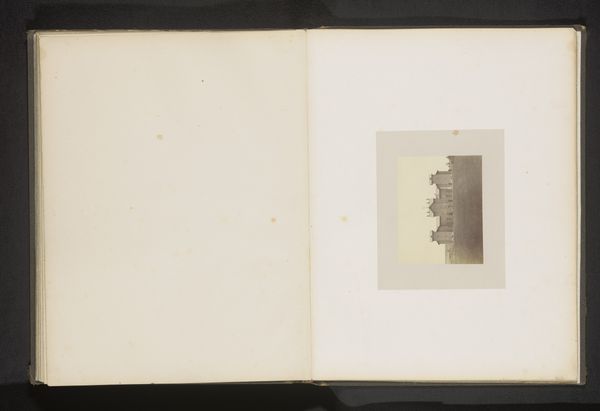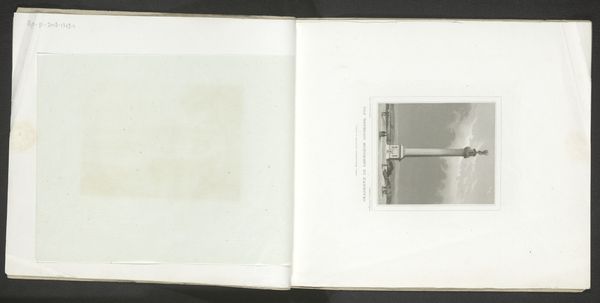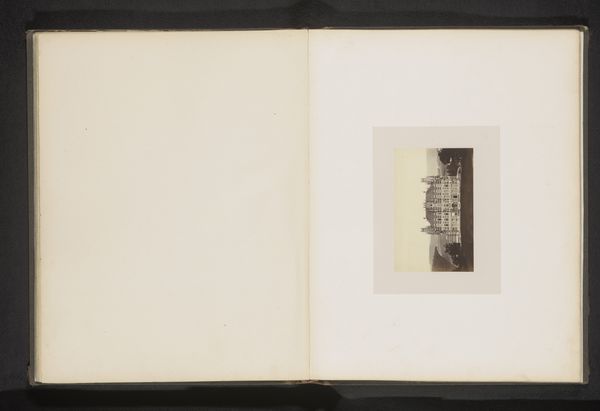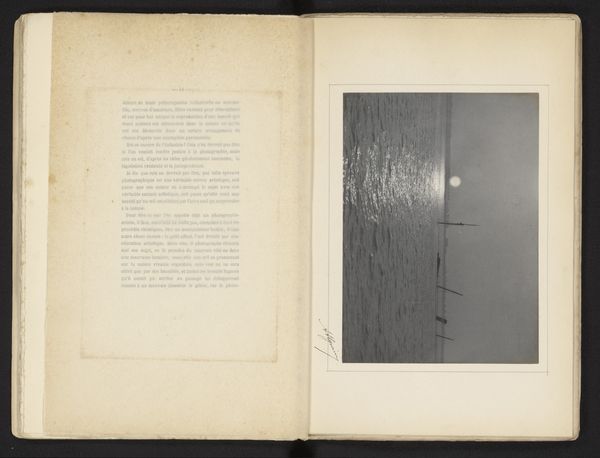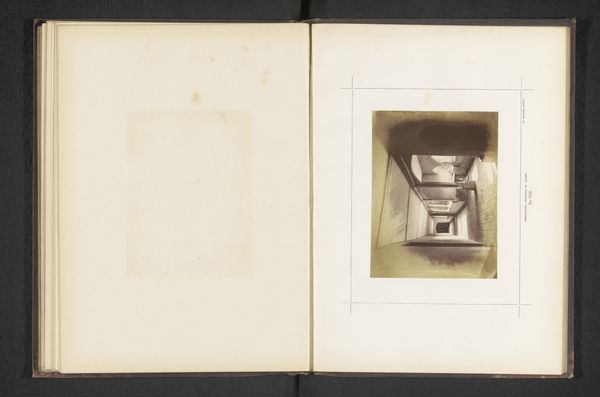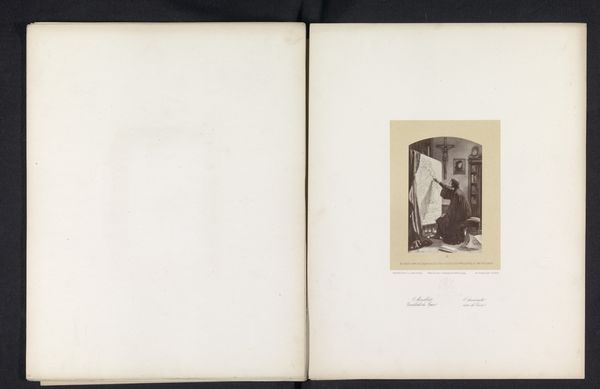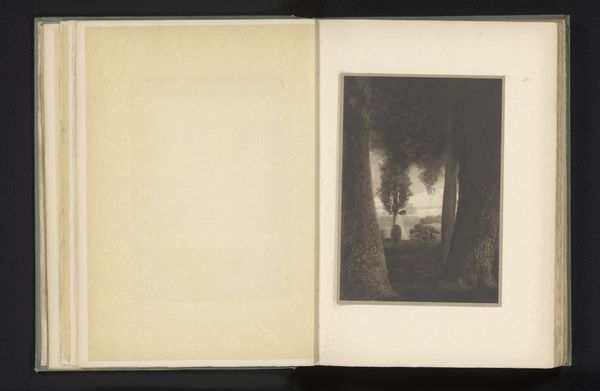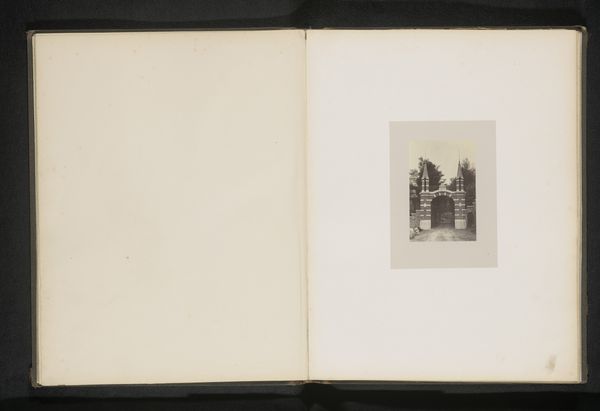
print, paper
# print
#
paper
#
monochrome
Dimensions: height 134 mm, width 70 mm
Copyright: Rijks Museum: Open Domain
Curator: F.V. Dwelshauvers-Dery, a name resonant with scientific inquiry, offers us this thought-provoking print dating back to before 1896, titled "Voorbeelden van de breking van licht" or, translated, "Examples of the Refraction of Light". What strikes you upon first viewing it? Editor: A quietude, actually. Despite it being ostensibly about light, the muted tones evoke a stillness, almost as if light itself has been captured and catalogued like specimens in a jar. Curator: The artist certainly engages with the mechanics of observation. Note how the monochromatic palette, executed through print on paper, eliminates the distraction of hue. We are left with pure tonal relationships, lettered A through F. This structural reduction forces the viewer to analyze value and form meticulously. Editor: Precisely. It reminds me of an alchemist's notebook, documenting experiments to unlock some secret of the universe. There's a subtle drama in the progression from that solid, almost opaque ‘A’ to the ethereal ‘F.’ It feels like watching light gain sentience. Curator: I appreciate that metaphorical reading. Structurally, each rectangular field is distinct yet interconnected through gradual gradations, which exemplifies how a small shift can bring huge changes to the system. Look closely at “E” with its more complex articulation, disrupting what is otherwise a smooth tonal scale. Editor: Ah, "E"—a beautiful rebellion! Like a quantum particle defying prediction. Maybe Dwelshauvers-Dery is subtly implying that our attempts to categorize and define phenomena will inevitably meet with delightful chaos. It stops the work from feeling clinical, and starts turning it into something that feels... human. Curator: A most astute interpretation. I hadn’t considered the element of unpredictability that may intentionally challenge the otherwise exacting structure, which leads the work towards expressionism. I find my initial perception undergoing a gradual refraction itself now. Editor: Right? "Examples of the Refraction of Thought", maybe that’s what it should have been called. It began like an academic treatise, and ended with a little, beautifully designed explosion in the corner of my brain.
Comments
No comments
Be the first to comment and join the conversation on the ultimate creative platform.
